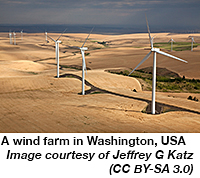Wind turbine condition monitoring market
21/07/2022
Insight Partners has published its latest research study, titled: ‘Wind turbine condition monitoring market forecast to 2028 – COVID-19 impact and global analysis by component (hardware, software and services) and application (rotor, tower, gearbox, generator and others)’.
The global wind turbine condition monitoring market growth is being driven by the growing inclination towards renewable clean energy, technological advancement in wind turbine manufacturing and monitoring and the increasing deployment of offshore wind farms worldwide.
Advantech Co Ltd, Baker Hughes, Envision Group, Enercon GmbH, goldwind.com, General Electric, Nordex SE, Siemens Gamesa Renewable Energy, TÜV Rheinland and Vestas are among the key players profiled in this wind turbine condition monitoring market study. In addition, several other essential companies were analysed to achieve a holistic view of the global wind turbine condition monitoring market and its ecosystem.
In 2021, GE Renewable Energy announced that it had received an order from Continuum Trinethra Renewables Pvt Ltd (a subsidiary of Continuum Green Energy) to deliver, install and commission 37 units of its 2.7-132 onshore wind turbines for the 99.9 MW Rajkot wind farm in Gujarat, India. Last year, GE and Continuum struck a deal to deliver turbines to the 148.5 MW Morjar, Bhuj wind farm in Gujarat, India.
This year, the National Offshore Wind Research & Development Consortium (NOWRDC) in the USA created two GE research projects: one focused on establishing a robust joining technique for large iron castings and another on the use of an autonomous inspection vessel (AIV) for offshore wind turbines.
North America is one of the prominent regions to utilise renewable and clean energy in its energy mix. Due to various factors, such as favourable economic policies for clean energy, high literacy rate and awareness about clean energy among the masses, there is a positive outlook for the adoption of new technologies across various verticals. A strong presence of energy ecosystems in North America also supports the adoption of wind energy, which is subsequently driving the wind turbine condition monitoring market.
According to the North American Renewable Integration Study (NARIS), wind and solar energy are projected to contribute 95% of energy generation in North America by 2050, subsequently increasing the growth of wind turbine condition monitoring market demand. Furthermore, the United States Department of Energy, Secretaría de Energía de México and Natural Resources Canada have partnered together to inform grid planners, policymakers, utilities and other stakeholders in the energy ecosystem throughout North America about the possible clean energy grid-integration scenarios on a country as well as regional perspective, thereby contributing to wind turbine condition monitoring market growth.
Based on application, the sector is segmented into rotor, tower, gearbox, generator and others. The gearbox segment led the wind turbine condition monitoring market in 2020. The basic function of the gearbox in the wind turbine is to transfer energy from the rotor to the generator. Due to frequent braking and variable wind speeds, the load fluctuates, which causes a large amount of wear on the moving parts. With accurate real-time monitoring and analysis, staff schedules can be consulted and repairs can be conducted at an early stage, which helps in cost savings.
Sweden is a global leader in decarbonisation, as it aims to be carbon neutral by 2045, and the energy sector aims to achieve 100% renewable electricity generation by 2040. Thus, the growing inclination towards renewable energy accelerates the requirement for respective vibration sensors, thereby contributing to wind turbine condition monitoring market growth.
According to the International Energy Agency, the prolonged COVID-19 issue is causing the biggest decrease in Middle East and North Africa (MENA) energy investment in history, which is also negatively affecting the wind turbine condition monitoring market.
Lockdown has caused supply chain interruptions, personnel shortages and project finance challenges, all of which have impacted energy projects, which has further impacted the wind turbine condition monitoring market.
Countries in the Middle East and others rely heavily on China, which generates more than half of the world’s renewable energy technologies. As a result of the crisis, the global supply chain network, including that of renewable energy, has been badly affected, including the wind turbine condition monitoring market. The COVID-19 pandemic is limiting the development of wind turbine condition monitoring in the the Middle East and Africa (MEA).